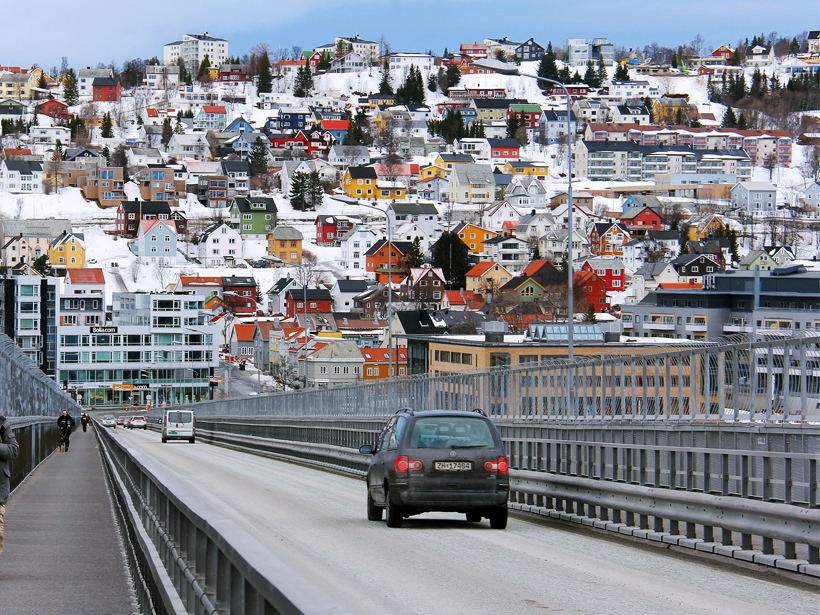New findings suggest that cleaner air can have an unexpected effect: fewer very cold days.
A recent study in Nature Climate Change found that restrictions on the emissions of aerosols, which include particles created when coal is burned, resulted in local warming because there were fewer aerosols in the atmosphere to reflect sunlight. The effect of aerosols on radiation in and around the atmosphere is known as radiative forcing, and the researchers say this is the first study to link anthropogenic aerosol forcing with extreme winter weather in Europe and northern Eurasia.
Straightening Out the Jet Stream
The scientists from the California Institute of Technology (Caltech) and NASA’s Jet Propulsion Laboratory (JPL) looked at atmospheric data from 1970 to 2005. They analyzed the movement of the Northern Hemisphere polar jet stream and its undulations, known as Rossby waves, and found there was a marked decline in extreme Rossby wave activity at high latitudes, mainly northern Eurasia. The reduction in Rossby wave activity corresponded to a reduction in aerosol emissions in northern Europe.
On a regional level, aerosols could have a greater effect on extreme winter weather than greenhouse gases.
After performing climate simulations, researchers found that the trend of fewer extreme winter cold days also corresponded to the reduction in Rossby wave activity and could be reproduced only after accurately accounting for reduced anthropogenic aerosol forcing.
The findings indicate that on a regional level, aerosols could have a greater effect on extreme winter weather than greenhouse gases, in part because of their destabilizing impact on the jet stream. When the jet stream is relatively stable, it’s less likely to loop southward, bringing with it Arctic chills and a stronger winter bite.
“Our model simulation further illustrated the mechanism of how aerosols affect winter weather by altering jet stream location and waviness,” said Yuan Wang, a research scientist at Caltech and JPL in Pasadena, Calif., and the lead author of the study. “The insight we gained is that the warming due to aerosol reductions in Europe enhances the meridional temperature gradient on the jet’s poleward flank and results in a significant suppression in extreme events over northern Eurasia.”
Scientists are still trying to unravel aerosols’ complex effects on global warming. A 2015 study, for instance, found that aerosols have a strong effect on the reflectivity of Earth’s atmosphere and that they absorb more solar radiation than previously thought. Another study, in 2017, determined that the global average radiative effect of aerosols for 2006 had an overall cooling effect but that different mixtures of aerosols in various regions produced different effects.
Aerosols and Climate Mitigation
The results of the Caltech-JPL study are an example of how aerosols can affect atmosphere dynamics and act as drivers of extreme weather. They also highlight the importance of understanding atmospheric aerosols in predicting extreme weather events, which is crucial for climate mitigation and adaptation strategies, says Megan Willis, an environmental chemist and postdoctoral fellow at Lawrence Berkeley National Laboratory’s Chemical Sciences Division in Berkeley, Calif. Willis was not involved with the new study.
“As someone who studies the detailed chemistry and composition of atmospheric aerosols, this study really highlights for me the importance of understanding that chemistry and of identifying the most important aspects of that chemistry so it can be better included in global models like those used in this study,” Willis adds.
Wang says he and his colleagues plan to continue researching anthropogenic aerosol effects on other high-impact weather and climate extremes on both regional and global scales.
—Tim Hornyak (@robotopia), Science Writer
Citation:
Hornyak, T. (2020), Cleaner air takes some of the bite out of European winters, Eos, 101, https://doi.org/10.1029/2020EO140790. Published on 26 February 2020.
Text © 2020. The authors. CC BY-NC-ND 3.0
Except where otherwise noted, images are subject to copyright. Any reuse without express permission from the copyright owner is prohibited.

